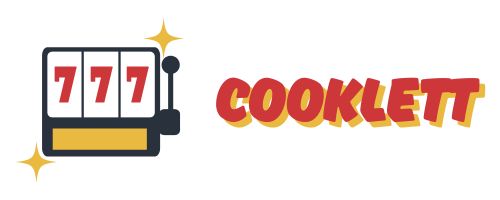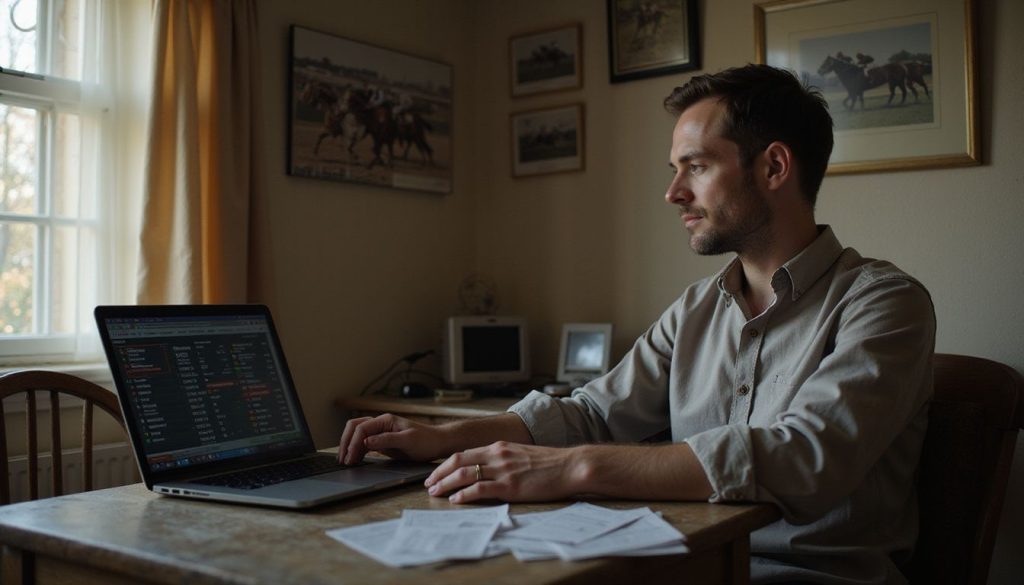Many horse racing bettors struggle to find winning opportunities in a sea of confusing odds and statistics. Professional gamblers know that successful betting on horse racing depends on finding value, not just picking winners.
This guide will teach you how to spot value in horse racing odds by showing you proven methods to calculate true probabilities and compare them against the betting public’s opinions.
Master these techniques and watch your profits grow.
Understanding Value in Horse Racing

Value in horse racing means finding horses that offer better odds than their actual chances of winning. Smart bettors know that the morning line odds and tote board numbers don’t always reflect a horse’s true probability of success.
The concept of true odds
True odds show the real chance a horse has to win a race. These odds come from careful study of each horse’s ability, form, and racing conditions. Most bettors see only the tote board odds, which reflect how much money people bet on each horse.
True odds differ from these market prices because they show actual winning chances, not betting patterns.
Smart punters calculate true odds by looking at factors like class level, recent performance, and track conditions. A horse might have 4-to-1 odds on the tote board but deserve 2-to-1 based on its real chances.
This gap creates value betting opportunities. I learned this lesson at Saratoga when a horse with morning line odds of 8-to-1 won easily after my handicapping showed it deserved 3-to-1 odds.
The key to successful horse betting lies in finding horses whose true chances exceed what the betting public believes they are.
Why value matters in betting
Value betting forms the foundation of profitable horse racing wagering. Smart bettors focus on finding horses with better chances than their betting odds suggest. The betting public often misjudges a horse’s true winning probability.
This creates opportunities for sharp handicappers to profit over time.
Most casual bettors chase favorites or rely on tips from friends. Professional gamblers take a different approach. They calculate each horse’s actual chances of winning and compare these to the morning line odds.
Value exists when your calculated probability shows higher chances than the tote board suggests. For example, if you believe a horse has a 25% chance to win but the odds suggest only 20%, you have found value.
This mathematical edge separates successful bettors from those who lose money consistently. Understanding how to identify these value opportunities will help you develop your own ratings system.
How to Identify Value in Horse Racing Odds
Finding value in horse racing odds requires you to think like a professional handicapper. You must create your own assessment of each horse’s chances before looking at the tote board or morning line odds.
Develop your own ratings
Creating your own horse ratings forms the foundation of successful value betting. You need to analyze each horse’s past performances, speed figures, and class level to build accurate assessments.
Study the morning line odds and compare them with your calculations. Track factors like jockey changes, trainer patterns, and recent workouts. Many bettors rely solely on public handicappers or the betting public’s opinions, but developing personal ratings gives you a real edge.
Your rating system should include speed ratings, pace analysis, and form cycles for each runner. I learned this approach after years of losing money by following popular picks without doing my own research.
Assign numerical values to different performance aspects, then convert these ratings into your own odds. Compare your numbers with the tote board odds to spot discrepancies. The horses showing the biggest differences between your odds and the market odds often represent the best value betting opportunities in pari-mutuel wagering.
The key to successful handicapping horse racing is developing your own opinion before looking at what others think.
Calculate probability and convert to odds
Converting your horse’s winning chances into numbers helps you spot real value. Start by giving each horse a percentage chance of winning based on your research. A horse you think has a 25% chance of winning gets a 0.25 probability rating.
Convert this to decimal odds by dividing 1 by the probability (1 ÷ 0.25 = 4.0). These decimal odds show what fair odds should look like for that horse.
Compare your calculated odds with the morning line odds and current betting pools. If your math shows a horse should be 4.0 decimal odds but the tote board displays 6.0, you found potential value.
The betting public might be overlooking this horse’s true chances. Smart bettors use this gap between their odds and market prices to find profitable win bets, place bets, and show bets across different class levels.
Compare your odds with market odds
After you calculate your own odds, you need to compare them with the morning line odds and current tote board prices. This comparison reveals where value exists in the betting pools.
I learned this lesson the hard way at Churchill Downs during the Kentucky Derby when I backed a horse at 8-1 that I calculated should have been 4-1 based on class level and recent form.
Market odds reflect what the betting public thinks about each horse’s chances. Your personal odds show what you believe the true probability should be. Value betting opportunities appear when your calculated odds are shorter than the market odds on the tote board.
For example, if you rate a horse at 3-1 but the current pool betting shows 6-1, you have found potential value. Smart bettors use this method for win bets, place bets, and even exotic bets like exactas and trifecta key wagers.
Factors That Create Value Opportunities
Smart bettors find value when the betting public makes mistakes about a horse’s true chances. These mistakes happen when recent poor performances hide a horse’s real ability or when popular picks get too much attention at the tote board.
Underrated horses due to recent performance
Horses often get overlooked by the betting public after a string of poor finishes. The tote board reflects this bias as bettors focus on recent results rather than the bigger picture.
A horse that finished last in its previous race might have faced tough competition or encountered traffic problems during the stretch run. Smart handicappers dig deeper into past performances to find these hidden gems trading at long odds.
Racing fans frequently dismiss horses that haven’t won recently, creating excellent value betting opportunities. I’ve found winners at 15-1 odds simply because they had three consecutive fourth-place finishes against stronger fields.
These animals often drop in class level or find easier competition, making them prime candidates for win bets. The morning line odds rarely reflect a horse’s true ability after a rough patch, giving sharp bettors a clear edge over the betting pools.
Market overreactions to popular picks
The betting public often creates value opportunities through emotional reactions to popular horses. Media coverage and public sentiment can push odds down on horses that receive heavy attention, especially in major races like the Kentucky Derby.
Casual bettors tend to back horses with impressive recent wins or famous jockeys, causing the tote board to show artificially low odds. This creates situations where lesser-known horses offer better value at longer odds.
Smart bettors can profit from these market overreactions by identifying horses that deserve shorter odds than the betting pools suggest. Morning line odds sometimes provide better guidance than the final odds after heavy public wagering.
Pari-mutuel betting systems mean that popular horses often become undervalued bets, while overlooked horses at the same class level offer superior returns. Sportsbook odds and betting exchanges can also reveal where the betting public has pushed prices away from true probability.
Advanced Techniques for Value Betting
Smart bettors use advanced methods to find better value in horse racing odds. These techniques help you make more money from your win, place and show bets across different betting pools.
Dutching strategies
Dutching strategies let you bet on multiple horses in the same race while guaranteeing a profit no matter which one wins. This approach works by calculating the exact amount to wager on each horse so your total payout exceeds your total investment.
You spread your risk across several contenders instead of putting all your money on one horse. Smart bettors use dutching to back two or three horses with good value in competitive races.
Most successful dutching requires finding horses with long odds that offer genuine winning chances. You calculate each horse’s probability of winning, then determine how much to bet on each selection.
Online betting calculators make this math simple for beginners. The key is finding races where the betting public has overlooked quality horses, creating opportunities where your combined win bets generate consistent profits across different outcomes.
Arbitrage opportunities
Arbitrage opportunities arise when different bookies or betting pools offer conflicting odds on the same race. Smart bettors can place win bets on multiple horses at different tracks or online platforms to guarantee profit regardless of which horse wins.
This strategy works best with exotic bets like the daily double or trifecta key, where odds vary significantly between venues.
Successful arbitrage requires quick action and careful calculation of fractional odds across multiple betting platforms. You must compare morning line odds with live tote board prices to spot these gaps.
The betting public often creates these opportunities by heavily backing favorites at one track while ignoring them at another, causing price differences that experienced bettors can exploit for guaranteed returns.
Each-way value betting
Each-way value betting offers smart bettors two chances to win with a single wager. This strategy works best with horses at long odds that have solid place or show potential. You split your bet between win and place positions, creating value even if your horse finishes second or third.
The place portion typically pays at reduced odds, usually one-quarter or one-fifth of the win odds depending on field size.
Smart each-way betting requires careful analysis of the betting pools and tote board information. Look for horses with strong class level credentials that the betting public overlooks.
These runners often provide excellent value in the place market while maintaining decent win chances. Calculate your potential returns for both win and place scenarios before wagering.
This approach works particularly well in competitive races where several horses have legitimate winning chances, making the place bet a profitable safety net for your investment.
Common Mistakes to Avoid in Value Betting
Most bettors make the same costly errors that drain their bankrolls. Chasing short odds on heavy favorites is one of the biggest traps. The betting public often overvalues horses with impressive recent wins, creating inflated odds that offer poor value.
I’ve seen countless bettors lose money on even money favorites that should have been priced at much longer odds. Another major mistake is ignoring the tote board fluctuations before post time.
Smart money often moves late, and these shifts can signal where the real value lies.
Emotional betting destroys value opportunities faster than any other factor. Many bettors fall in love with a horse’s story or get caught up in Kentucky Derby hype, ignoring the actual probability calculations.
Exotic bets like trifecta key and superfecta key wagers can seem attractive, but they often carry terrible odds compared to simple win, place, or show bets. The betting pools for these complex wagers are smaller, making it harder to find genuine value.
Focus on developing your own ratings system instead of following the crowd’s morning line odds preferences.
Conclusion
Finding value in horse racing odds transforms casual bettors into smart players who make money over time. You learned to create your own ratings, calculate true probabilities, and spot opportunities when the betting public overreacts to popular horses.
These betting strategies work because they focus on math rather than emotions, giving you a real edge at the tote board. Start by practicing with small win bets and place bets before moving to exotic bets like trifecta key or superfecta key wagers.
Track your results for at least 100 bets to see if your value betting approach beats the morning line odds consistently. Success in horse racing comes to those who treat it like a business, not a game of luck.




